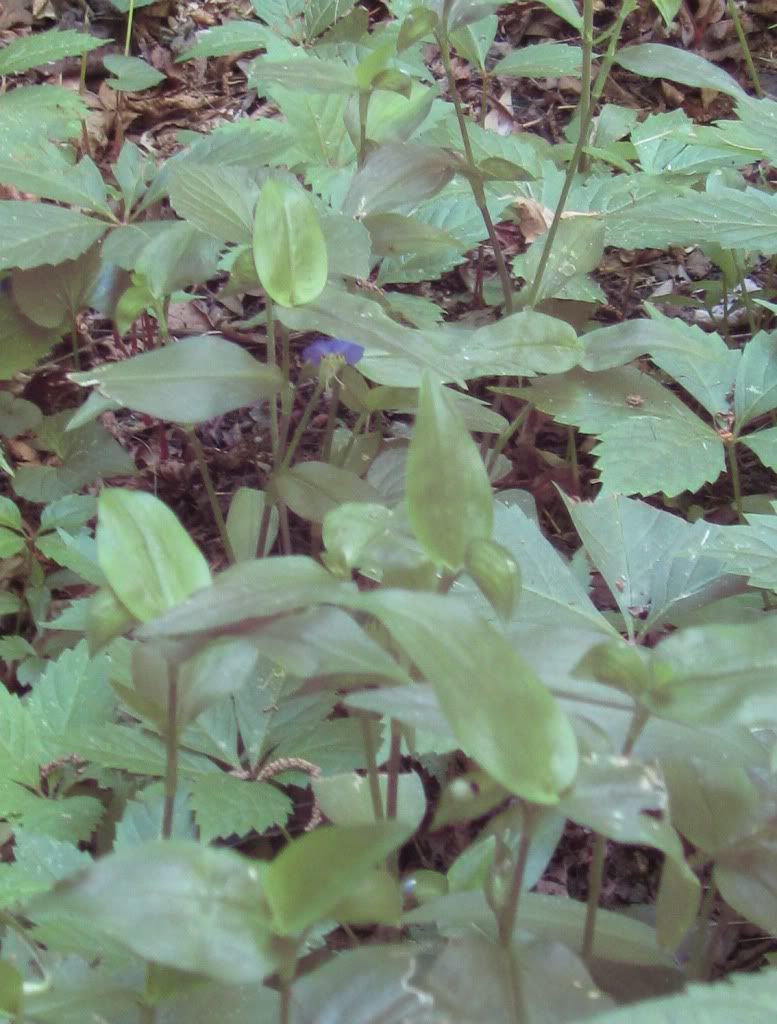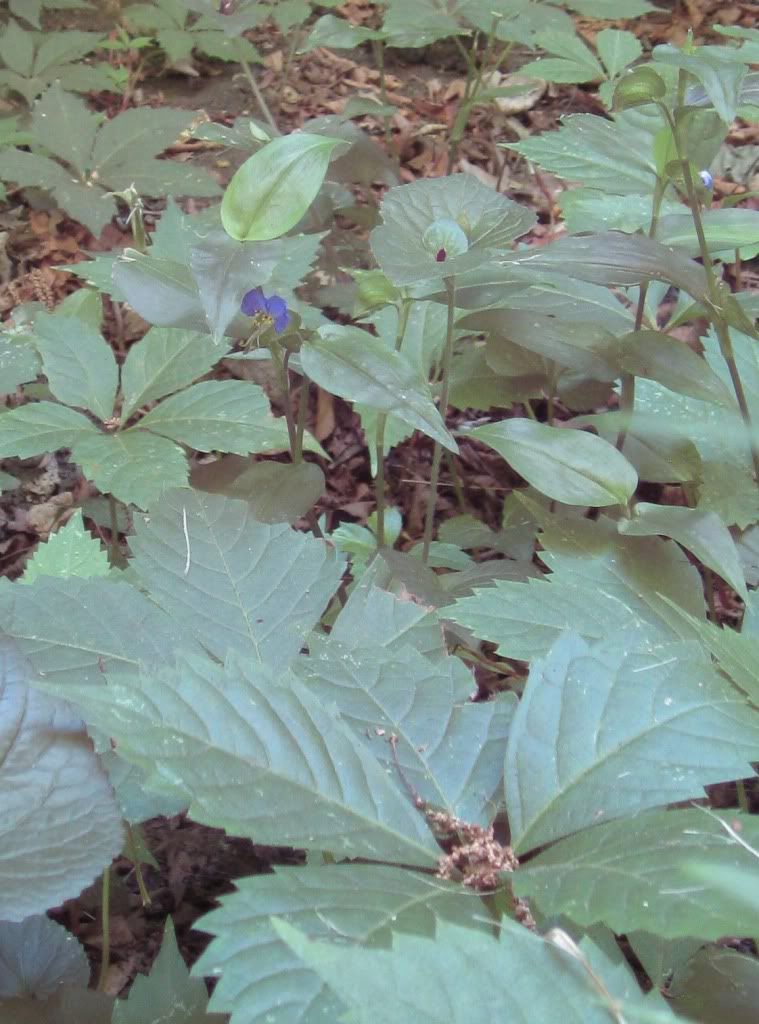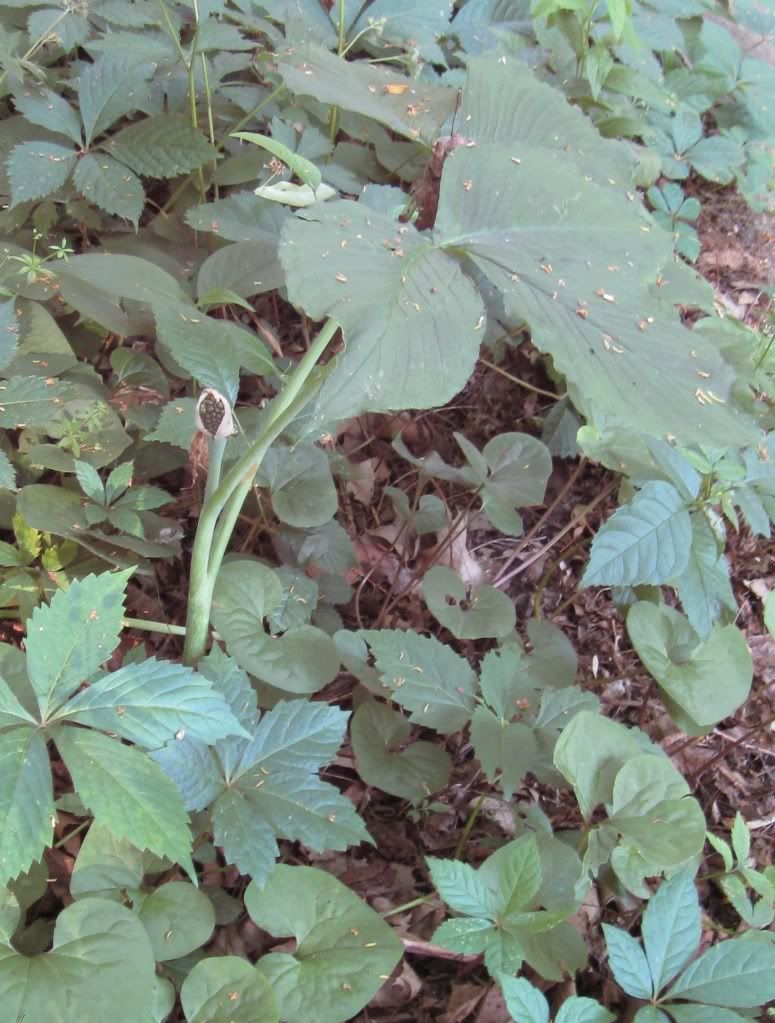I’m bending the rules today, since the dayflower originated in Asia, not North America. However, the plant has gone native throughout most of the U.S. and is common in Iowa. Dayflower spreads easily, so some gardeners consider it an undesirable weed, but it’s not as invasive as the plants on Iowa’s noxious weeds list.
This post does contain one undisputed Iowa wildflower: a Jack-in-the-pulpit with a seed pod visible where the flower used to be.
This is an open thread: all topics welcome.
The scientific name for the Asiatic dayflower is Commelina communis, and I like the story behind that name:
Interestingly the genus Commelina was named for the Commelin brothers; Kaspar and Johan were famous Dutch botanists, but their brother died young and so the dayflowers have two beautiful, larger blue petals, and a third small, barely formed white petal.
The dayflower plant has stems growing along the ground and pointed leaves. Sylvan Runkel and Alvin Bull describe the blooms as follows in Wildflowers of Iowa Woodlands:
Distinctive showy flowers, usually a half inch or more across, cluster toward the tips of the up-curved stems. A large green keel-like sheath or bract unfolds and a flower emerges briefly on its own slender stalk, usually in the morning and for only part of one day. This is the basis for the common name dayflower. Two showy rounded blue petals give the appearance of a two-petal flower. But a third smaller whitish petal below is nearly hidden by reproductive pats.
They aren’t kidding about the short-lived nature of these flowers. If you see dayflowers and go back to the same patch six hours later, the blooms may be gone. The smaller, translucent white petal didn’t come through in my photos, but you can see the blue parts of the flower.
Another common name for dayflower is “wandering Jew,” but the “wandering Jew” sometimes grown as an indoor plant looks very different.
Finally, I leave you with a picture of a Jack-in-the-pulpit I found last week. A pod of green seeds is developing where the “jack” used to be. The dry-looking cover around the seed pod is what used to be the “pulpit.” Later this summer, the seeds will turn bright red.




4 Comments
Lovely
I have seen those little blue flowers sometimes, and I wondered what they were called.
I looked through the weed list, and I’m surprised that garlic mustard wasn’t on the list. That stuff is everywhere – I’ve even had to pull it from my backyard.
corncam Wed 13 Jun 4:21 PM
i believe
it was on the list, as something to be pulled, not featured.
albert Wed 13 Jun 5:36 PM
I think the noxious weed list
approved by the Iowa legislature focuses on invasives that are a problem for farmers.
Garlic mustard is terrible, though–we fill many garbage bags every year, just from the woods in Windsor Heights. You can pull up a ton of it and then find more growing a week or two later in the area you just weeded. Sometimes it’s discouraging to see how easily it comes back, but keeping after it does prevent it from taking over. There are some depressing wooded areas around Des Moines (some stretches of the Clive greenbelt and parts of Greenwood Park) where it’s just solid garlic mustard, because no one pulled it up for many years.
desmoinesdem Wed 13 Jun 10:34 PM
Yep, it's a list for farmers
I won’t do my full Iowa-noxious-weed-list rant again, but will note that in prairie plantings and natural areas, velvetleaf and cocklebur are not problems. They quickly and politely retreat as natives take hold. A good science-based noxious weed list would be put together by experts, not state legislators, and would consider impacts on natural areas, not just farm fields.
PrairieFan Thu 27 Apr 5:54 PM